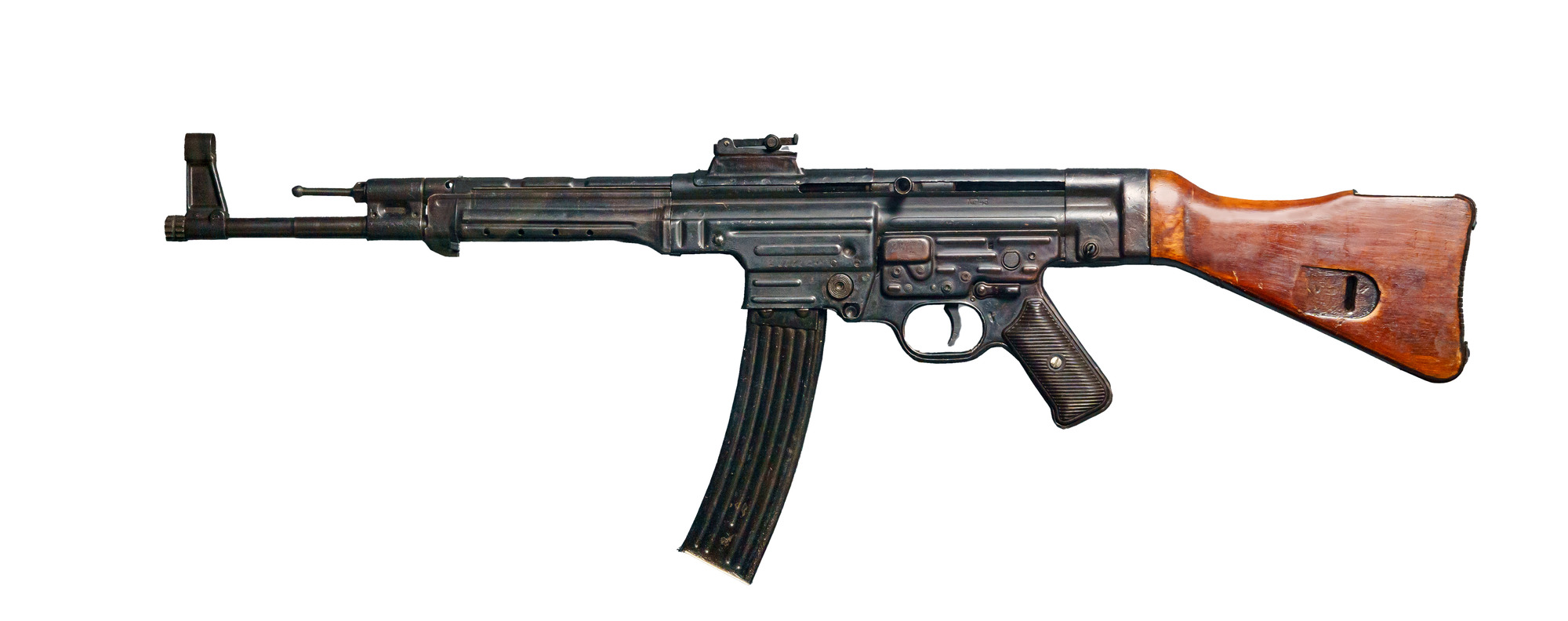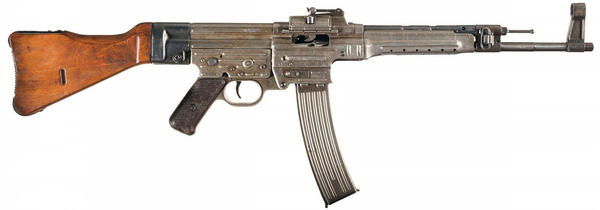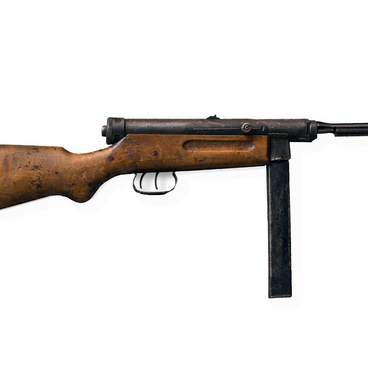The exhibition of the Victory Museum includes a unique weapon — the German assault rifle StG 44. Over 400,000 rifles of this model were manufactured during World War II. It was the first modern assault rifle-type weapon put into mass production.
During World War II, the StG 44 rifles were successfully used by both German troops and by soldiers of the Allied powers as captured weapons. This assault rifle was superior in its combat and operational characteristics to the most advanced submachine guns, automatic rifles, and carbines of that period.
The history of this rifle began before World War II. In the 1930s, an intermediate cartridge was introduced which was more efficient than the existing alternatives. As a result, it was necessary to invent new firearms compatible with that cartridge. German companies “Haenel” and “Walter” were commissioned to design a new rifle. After the trials, the “Haenel” rifle was chosen as the preferred version. The company was headed by the weapons designer Hugo Schmeisser.
The mass production of the StG 44 was launched in 1943. At first, the new weapon was mostly used by the elite units of German troops. The name of the rifle was chosen personally by Adolf Hitler. Nowadays, all weapons with a design similar to the “Haenel” rifle are known as “assault rifles.”
The rifle’s mechanism was capable of providing both automatic and single-shot fire. The wooden buttstock was attached to the receiver and could be detached during the disassembly.
However, the assault rifle also had certain disadvantages: it was heavy and cumbersome. The wooden buttstock would often break down in close combat. Moreover, the aiming devices and the long magazine were located too high. The shooter had to hold their head up which resulted in a decreased hit rate. These factors made the rifle less convenient.
After the end of World War II, the StG 44 rifles were used in East Germany and Czechoslovakia. The invention and successful use of the StG 44 was one of the milestones of the post-war weapons development history. Most countries have adopted assault rifles of this type which use intermediate cartridges.
During World War II, the StG 44 rifles were successfully used by both German troops and by soldiers of the Allied powers as captured weapons. This assault rifle was superior in its combat and operational characteristics to the most advanced submachine guns, automatic rifles, and carbines of that period.
The history of this rifle began before World War II. In the 1930s, an intermediate cartridge was introduced which was more efficient than the existing alternatives. As a result, it was necessary to invent new firearms compatible with that cartridge. German companies “Haenel” and “Walter” were commissioned to design a new rifle. After the trials, the “Haenel” rifle was chosen as the preferred version. The company was headed by the weapons designer Hugo Schmeisser.
The mass production of the StG 44 was launched in 1943. At first, the new weapon was mostly used by the elite units of German troops. The name of the rifle was chosen personally by Adolf Hitler. Nowadays, all weapons with a design similar to the “Haenel” rifle are known as “assault rifles.”
The rifle’s mechanism was capable of providing both automatic and single-shot fire. The wooden buttstock was attached to the receiver and could be detached during the disassembly.
However, the assault rifle also had certain disadvantages: it was heavy and cumbersome. The wooden buttstock would often break down in close combat. Moreover, the aiming devices and the long magazine were located too high. The shooter had to hold their head up which resulted in a decreased hit rate. These factors made the rifle less convenient.
After the end of World War II, the StG 44 rifles were used in East Germany and Czechoslovakia. The invention and successful use of the StG 44 was one of the milestones of the post-war weapons development history. Most countries have adopted assault rifles of this type which use intermediate cartridges.



